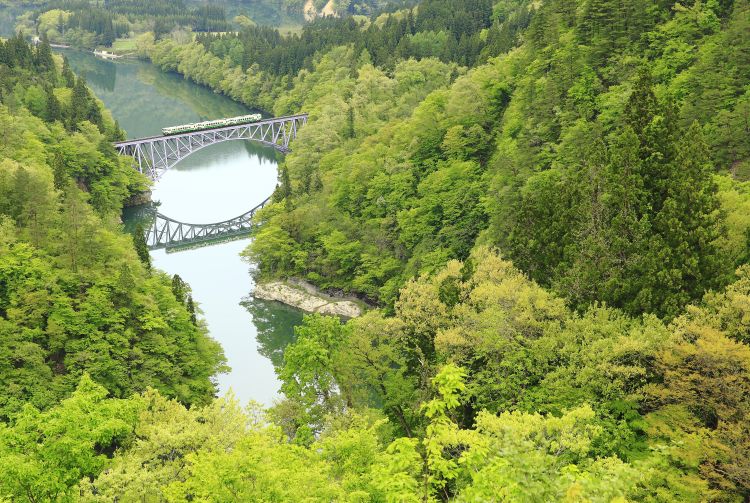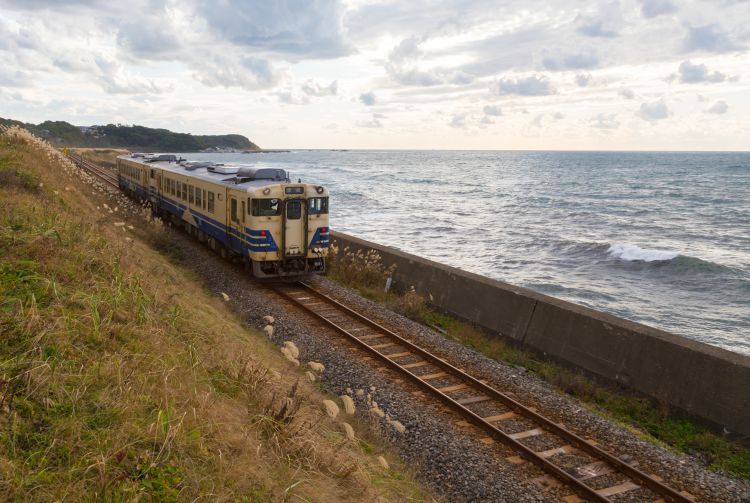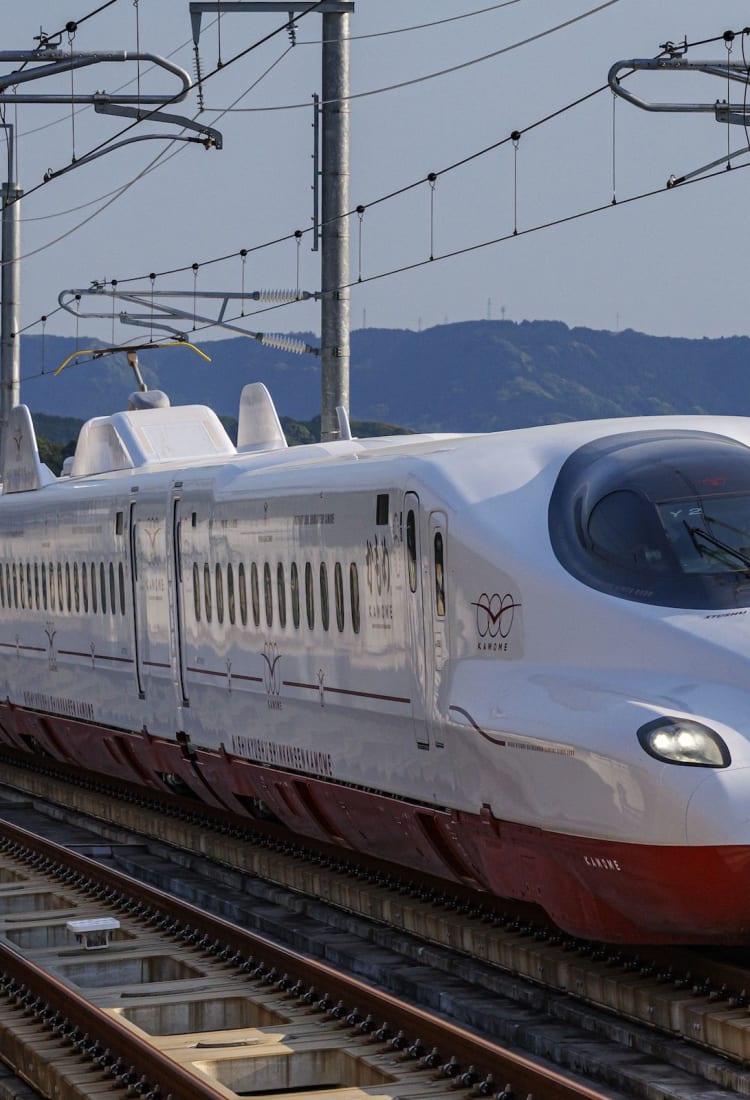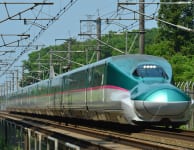Make the most of your trip to Japan with a JR Pass
The Basics
The Japan Rail (JR) Pass is a deal offered exclusively to foreign visitors traveling in Japan under temporary visitor status. It allows you to pretty much take unlimited rides on the JR network throughout Japan. Since the JR Pass was first created, the shinkansen (bullet train) network has greatly expanded, and now it's possible to ride the shinkansen all the way from Hokkaido to Kyushu.
From October 1st, 2023, a regular seven-day adult pass costs 50,000 yen, while those looking for a little more luxury can buy a Green Car (first class) pass from 70,000 yen. The 14-day regular adult pass is 80,000 yen, while the regular 21-day pass costs 100,000 yen.
Kids' passes are reduced by 50 percent for children aged between 6 and 11.
Click here for more information.

The shinkansen is one of the fastest, most convenient ways to get around Japan
What is covered?
The Japan Rail Pass gives you access to JR train lines countrywide, with very few exceptions. With your pass, you can take unlimited rides on most shinkansen , as well as on rapid, express and local JR trains.
Outside urban centers such as Tokyo and Osaka, the pass is best used to cover distance, as it does not include municipal subways and private suburban lines. With thousands of kilometers of track, the JR network connects you to attractions across Hokkaido, Honshu, Shikoku and Kyushu, the four main islands of Japan.
The pass allows you to ride many local buses operated by JR as well, including the tourist loop bus in Hiroshima, JR Hokkaido buses around Sapporo, and the local bus to Kusatsu Onsen. You can even ride the JR West Miyajima ferry, which operates from Miyajimaguchi, Hatsukaichi, Hiroshima and Miyajima.
NOTICE: Miyajima Visitor Tax
- From October 2023, visitors to Miyajima will be required to pay the Miyajima Visitor Tax. Please show your JR Pass at the service window of the JR West Miyajima Ferry and then pay the Miyajima Visitor Tax separately. https://another1000years-miyajima.jp/en/visitortax/index.html
The Japan Rail Pass makes plenty of famous attractions accessible, allows for easy and convenient travel across the country, and can save you money on your travels. Aside from discounted travel, some tourist facilities also offer special discounts or other benefits when you show your JR Pass.

What isn't covered?
There are some important exceptions you should know before deciding to buy a pass or not. For instance, the JR pass does not include rides on the Nozomi (the fastest service on the Tokaido-Sanyo Shinkansen route) or Mizuho trains (fastest on the Sanyo-Kyushu Shinkansen route). If you're traveling on these lines, be careful which trains you board, as passengers who ride the Nozomi and Mizuho with a JR Pass will have to buy an additional ticket before boarding. However, purchasing these additional tickets includes added benefits, like being able to ride from Tokyo to Hiroshima without changing trains, for example.
In cities like Tokyo, the pass doesn't give you access to the subway and metro lines, so you might find it a little inconvenient if you will spend most of your time in one major urban area. Many of the major attractions have JR stations nearby, but if you find a quicker or more convenient route on the subway, you will have to pay extra. Using a pre-paid IC travel card, though, is a convenient way to make use of both private railways and JR lines. However, some suburban "liner" express trains on the JR network, aren't included either, and passengers need a special separate ticket to board them.


It's also important to note that Japanese railroad networks can be extremely complex, so sometimes JR trains will also use private railway tracks. In these cases (as well as those involving JR express buses), additional fees may apply.
How do I get a JR Pass?
How you purchase a JR pass has changed as of October 1st, 2023. Now, there are two ways you can purchase the JR Pass: through the official website or through an overseas distributor. Although prices in Japanese yen are the same (may differ according to local currencies), travelers who purchase the JR Pass from the official website can reserve seats on the shinkansen and other limited express trains online prior to their arrival to Japan. The official site also offers information on discounts available to pass bearers at select attractions.

How do I use it?
When you arrive to Japan, you can pick up your pass or exchange your voucher at a designated pickup location. Make sure to have your passport, temporary visitor stamp or sticker and your exchange order or reservation number ready before you arrive at the counter to ensure a smooth exchange. Once you receive your JR Pass, you can start using the trains. The JR Pass itself is your ticket, and you can sit in any of the available seats of the non-reserved seat cars except when you reserve a seat, in which case you are issued a seat ticket.
You can make reservations on most shinkansen and other long-distance travel (like limited express trains) for no extra cost with your JR Pass. Making seat reservations is a good idea, especially if you're traveling during peak times and seasons, or riding the first or last trains of the day.
Some trains, including the fastest shinkansen like the Hayabusa (Tohoku Shinkansen), and Kagayaki (Hokuriku Shinkansen), certain limited express trains and some popular sightseeing trains don't offer non-reserved seats, so seat reservations are mandatory. Seat selection is generally not available on local and urban trains, but some quick web research will help you to confirm.
JR Pass holders can now use the automatic gates at stations when available, and if you have additional tickets you can stack them and feed them into the machine at once.
Travel tip: if traveling in the direction of Kyoto and Osaka from Tokyo on the shinkansen, reserve a window seat on the right for a view of Mt. Fuji.

So, should I buy it?
If you're hoping to cover a lot of ground, want to use the shinkansen for day trips, or even if you'd prefer to avoid air travel, toll roads, highways, and long-distance buses, the JR Pass might be a good investment. However, if you choose to spend most of your time exploring Tokyo or Osaka, it may be wise to look into subway passes, or area rail passes.
The potential disadvantage to owning a JR Pass might be trying to squeeze too much into your itinerary to maximize your discount or, the opposite: buying a pass and not using it to its full potential. Both of these scenarios can be avoided with a little planning.

Even rural spots are within reach
JR Pass alternatives
If you're planning to stay relatively local, there are regional and private passes that may be better value for you than the full JR Pass. In Tokyo, as of January 2024, you can get the Tokyo Subway Ticket which allows for 24 hours of unlimited travel along the Tokyo Metro and Toei Subway lines for only 800 yen—with 48-hour and 72-hour tickets available at 1,200 yen and 1,500 yen respectively—giving you the freedom to zip around the city hassle-free.
If you're traveling outside of Tokyo but not all over Japan, perhaps consider a regional JR Pass .
Regional JR passes offer unlimited rides in specific areas. If you plan to travel extensively through Western Japan (Kyoto, Osaka, Hiroshima, etc.), consider JR-West Rail Passes. If you'd like to focus your travel on the eastern parts (Tokyo, Nagano, Niigata, and Tohoku), look into the JR East Pass.
The latest information may differ, so please check the official website.






























































